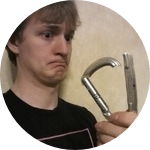About This Project
Mountain rescue teams often have to carry heavy, bulky equipment long distances especially for high-angle rescues. Reducing the weight of the gear carried will help teams move faster and respond faster, and broadening the field of knowledge with regards to anchor systems will help recreational climbers and mountaineers be as safe as possible.
Are dyneema slings in various knotted configurations suitable for rescue loads as anchors?
Is the Monster Munter a viable alternative to a tandem prusik belay or a lowering device?
Ask the Scientists
Join The DiscussionWhat is the context of this research?
Dyneema is a high-strength fiber with extremely low elongation, meaning that it doesn't stretch under load. It is extremely strong for its weight, but has a low melting point, and is weakened significantly by adding knots. It makes an excellent anchor material for recreational climbing, but the higher loads seen in high-angle rescue make strength testing of different anchor configurations necessary.
The Monster Munter is a friction hitch that allows the user to control heavy loads with relative ease. It is possible that this might be used to eliminate heavy and expensive lowering equipment, but testing is necessary to determine its abilities with regards to live rescue loads.
What is the significance of this project?
No comprehensive testing has been done so far on dyneema webbing in webolette style anchors, nor has any testing been done on strength or efficiency of the monster munter hitch. This project will fill both those gaps. By providing quantitative data on strength of specific anchors and techniques, I will give riggers critical tools to help them make decisions in the field.
What are the goals of the project?
- Ultimate strength testing on dyneema anchors of various configurations
- Ultimate strength testing of the Monster Munter hitch
- Efficiency testing of the Monster Munter hitch
Budget
My university has given me a small amount of funding that will cover some of the materials. In order to be scientifically rigorous, I need enough material to test multiple samples of the same configurations. In order to test anything, I need to build a jig to attach the materials to an Instron tensile tester. Both materials and steel cost money, and the limited university funding won't cover them. Therefore, I need $300 more to complete this testing.
Additional Information
Banner Photo Source: https://www.flickr.com/photos/rosslandsar/3482367216
Project Backers
- 13Backers
- 106%Funded
- $318Total Donations
- $24.46Average Donation
